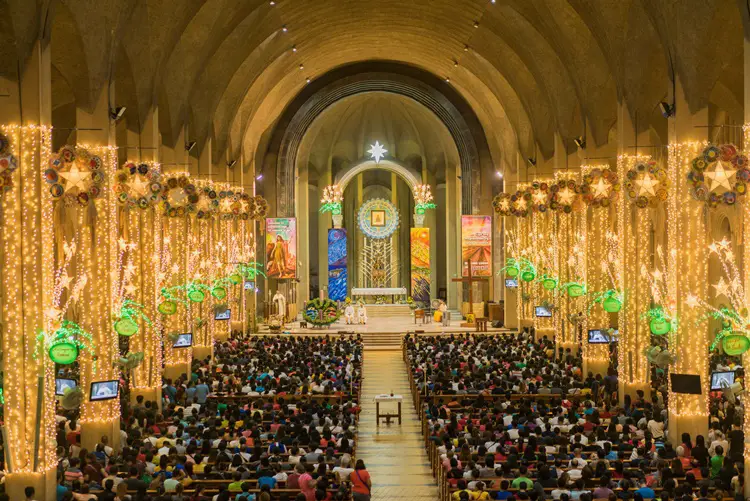Simbang Gabi History & Facts You May Have Yet To Know
Simbang Gabi Officially Stars in PH
SIMBANG GABI HISTORY – Here are some details and facts about the religious celebration also called Misa-de-galyo.
The Philippines is one of the countries across the globe that greatly celebrates religious events. Countless Filipinos are devotees of the different churches. With regards to the religious events greatly observed by the devotees of the Roman Catholic, one of them is the Simbang Gabi which has just started in the Philippines for this year.

Simbang Gabi is also called Misa-de-galyo, Misa Aguinaldo, Misa-de-notse, and Misa-de-noche. It is a religious celebrations that starts every December 16 — exactly nine (9) days before the Christmas eve.
For nine (9) days, devotees wake up early in the morning to attend mass at the nearest church. The last mass is held in the early morning of December 24 usually between 4:00 to 5:00 in the morning.

The masses for Simbang Gabi are known to be quite longer than the regular masses in the Catholic churches. These masses also serve as a novena for the Blessed Mother. It also serves as a chance for a novena for specific prayer intentions in line with the belief that the prayer intentions will be granted once the person is in perfect attendance to the masses held from December 16 to December 24.
Simbang Gabi History
The observance of Simbang Gabi dates back to 1587 in Mexico when the Roman Pope allowed the Mexican priest, Fr. Diego de Soria, to conduct masses who want masses scheduled at night time. He was a friar from the San Agustin Acolman convent.
If the priest holds the mass inside the church, all the doors of the church are left opened for those who cannot anymore be accommodated by the limited space inside the church. Then, the church bell served as the alarm for the people to signal that the mass is about to start.
In other places, there are bands that go around the city to encourage the residents to attend the mass held early in the morning.
In the Philippines, this religious practice started in 1669. It started when priests conducted a mass for the farmers who wanted to attend a mass during Christmas time but they cannot leave their lands long. Until now, Simbang Gabi is widely observed in the country.
During the nine-day novena, aside from the masses held very early in the morning, there are also traditional foods and drinks sold outside the churches. Many churchgoers turn to eating puto bungbong, bibingka, ibos, pandesal, and suman and drinking chocolate, tea, or coffee after the mass.
